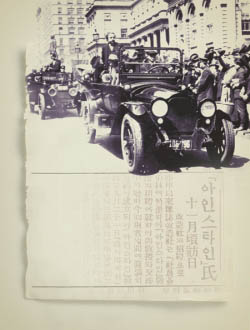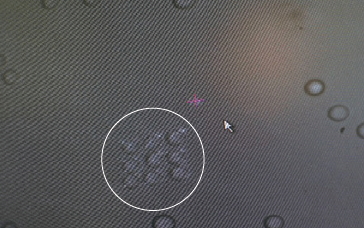시라노 드 베르주락이 에드몬드 로스탄드의 연극에 등장하는 가상인물임을 아는 사람들은 수백만명도 넘을 것이다. 이 연극의 주인공은 거대한 코를 가지고 있으며 이 사실을 언급하는 사람은 누구든 죽이고 마는 인물로 묘사됐다. 그는 시인이자 극작가였으며 재치있고 낭만적인 성격의 소유자이면서도 한꺼번에 백여명을 대적해 싸워 이겨내는 무모한 인물이었다. 불가능한 영웅에 대한 황당무계한 묘사가 아닐 수 없다.
그러나 시라노는 실제 살았다. 그는 실존인물로서 큰코를 가졌었고(연극에서 묘사한 것처럼 큰 코는 아니었겠지만) 다른 사람들과 다투어 살인도 서슴치 않았다.
그런데 시라노에 대한 가장 중요한 사실이 연극에서는 제대로 언급되지 않았다. 다른 무엇보다도 시라노는 최초의 공상과학소설작가중의 한명으로 줄 베르느가 등장하기까지는 아마도 최고였을 것이라는 점이다.
시라노가 발표한 명작은, 아니 적어도 그를 가장 잘 알려지게 만든 작품은, 1650년에 그의 허가도 없이 출판된 '달나라 여행'이다.
시라노가 일찍 세상을 떠난후(겨우 36세에) 자신이 승인한 초판이 1656년에 다시 발간됐고 1662년엔 그 후속물인 '해나라 여행'이 출간됐다.
'달나라 여행'의 가장 흥미로운 부분은 달나라에 도달할 수 있는 여러 방법들을 설명했던 점이다. 그 당시만 하더라도 달나라로의 여행은 회오리바람이나 큰새가 끄는 마차라거나 천사 혹은 저승사자의 힘을 빌리는 등 공상으로만 가능했었다. 그런데 시라노는 사람들이 전혀 생각하지 못했던 방법들을 설명했으며 무려 일곱가지나 고안해내는데 성공했다.
1. 뼈의 골수를 뒤집어 쓰는 것이다. 당시 사람들은 달이 골수를 빨아들인다고 믿었기 때문에 이렇게 하면 달로 여행할 수 있다.(이것은 물론 순수하게 전설을 따른 것 뿐이었다.)
2. 이슬이 담긴 작은 유리병들을 몸에 휘감으면 이슬이 공중으로 올라가면서 몰까지도 따라 올라가게 된다.(이슬은 공중으로 올라가지만 수증기로 변하기 때문에, 그렇더라도 고작 몇마일 밖에 올라갈 수 없다.
3. 자석을 손에 쥐고서 철판위에 서는 것이다. 자석을 머리위로 던지면 철판도 따라 올라가게 된다. 떨어지는 자석을 받아 다시 던지는 작업을 반복한다.(그럴듯하게 들리지만 가능한 일이 아니다. 자석을 위로 던지면 위로 올라가는 힘을 상쇄할 만큼의 힘으로 철판은 아래로 떨어지게 된다. 결국 중력에 끌려 전체는 밑으로 가라앉게 된다.)
4. 무엇인가를 공기로 가득채우고 열을 가한 후 구멍으로 빼내는 것이다. (이것은 제트비행기 원리의 한 유형인데 주변이 공기로 둘러싸여 있을 때만 가능하다. 시라노씨가 살았던 당시는 지구에 근접한 대기권으로 공기의 존재가 한정된다는 것과 지구와 달 사이엔 수천마일의 진공이 있다는 사실이 막 이해되기 시작할 무렵이었다)
5. 풍선을 연기로 가득 채우면 연기가 위로 올라감에 따라 풍선을 탄 사람도 달까지 올라갈 수 있다.(이 방법은 비행선의 원리인데 이 역시 지구와 달 사이가 공기로 차 있을때만 가능하다.)
6. 강철을 소재로 한 메뚜기 모양의 기계를 만들어 그 기계가 화악폭발의 힘으로 껑충껑충 뛰는 것을 반복하면서 공중을 헤쳐나가도록 하는 것이다.(이것은 비행기 같은 개념인데 시라노에게 필요했던 것은 메뚜기 다리 대신 프로펠러였고 반듯하지 않고 휘어진 날개들이었다.)
위의 여섯가지 방법이 현실적으로 불가능했던 것은 그들이 전설에서 따온 것이거나 기계적으로 불가능하거나 진공에선 전혀 가치가 없었기 때문이다. 그러나 시라노씨는 더 나아가 일곱번째 방법을 설명하였다.
7. 배에 몸을 싣고, 로켓을 붙이는 것이다.
결과적으로 이 방법은 유효한 것이다. 인간을 달나라로 이동시켰던 것은 바로 로켓이었다.
사실 '달나라 여행'의 주인공은 이 방법을 이용하여 공중으로의 여행을 시작했다. 어느 프랑스군인들이 재미로 배에 로켓을 달아 자신들을 날려보낸 것이었다.
로켓이 추진력을 잃게 되었을 때 소설의 주인공은 뼈의 골수로 온몸을 문질러 남은 여행을 계속할 수 있었다. 시라노씨가 여행시간 전체를 로켓에 맡기지 않았다는 것은 참으로 안타까운 점이지만 모든 것이 만족스러울 수 만은 없는 것이다.
따지고보면 시라노씨 편에서 볼때 로켓의 이용을 생각해 낸 것은 대단한 직관력이었는데 이 로켓의 원리는 시라노씨가 사망한 훨씬 이후인 1687년 아이작 뉴턴이 발견한 운동의 제3법칙을 따른 것이었기 때문이다.
뉴턴이 운동의 세 법칙들을 설명한 위대한 서적이 등장한 후에는 어떻게 그리고 왜 로켓의 원리가 작용할 수 있는가를 이해하기는 쉬웠다.
그러나 시라노씨는 뉴턴보다 40년가량 이전에 이미 알고 있었다. 그는 누구보다도 먼저 로켓의 가능성을 터득하고 있었던 것이다.
지난 1969년 우주비행사 닐 암스트롱이 달에 처음으로 발을 내딛어 '인류의 거대한 발자욱'을 남겼을 때 과학공상소설가들을 모신 신의 전당인 발할라 어디선가에서 시라노씨의 영혼이 흐뭇하게 미소짓고 있었음이 분명하다. 비록 3세기의 시간이 지난 후였지만 공상과학소설 역사 중 가장 놀라운 통찰력이 현실로 나타난 것이었다.
There must be millions of people who know that Cyrano de Bergerac is a fictional character in a play by Edmond Rostand. He is pictured as having a huge nose and was forever killing people who mentioned that fact. He was a poet, playwright, wit and romantic and so foolhardy as to fight a hundred opponents at once-and win. What an extravagant image of an impossible hero. But Cyrano really lived. He was a real person who had a large nose(though undoubtedly not as big as pictured) and who fought and killed people.
And yet most important thing about Cyrano is barely referred to in the play. In addition to everything else, Cyrano was one of the earliest science fiction writers and very likely the best until Jules Verne came along.
Cyrano's masterpiece, or at least the work for which he is best known, is "A Voyage to the Moon" which was published without his permission in 1650.
After Cyranos early death(he was only 36), the first authorized edition of the book was published in 1656, and its sequel " A Voyage to The Sun" in 1662.
The most interesting portion of the book was Cyrano's description of various ways in which the Moon might be reached. Until then, trips to the Moon had been made fictionarilly by way of waterspouts, by vehicles hitched to large birds and by the use of demons or angels for transport. Cyrano tried to describe methods never before used and succeeded in listing no fewer than seven.
1. You could cover yourself with bone marrow. Since it was believed at the time that the Moon sucked up bone marrow, it would carry you to the Moon.(This is pure legend, of course.)
2. You could strap vials of dew to your body and as that rises it will carry you along.(Dew does rise, but only because in vaporizes and it will travel, at most, a few miles into the air.)
3. You could stand on an iron plate holding a magnet. Throw the magnet into the air and the plate will follow. Catch the magnet and throw is up again ad infinitum.(This sounds good, but it won't work. If you throw the magnet upward, you drive the plate downward by just enough to cancel the upward motion and the whole system is pulled down to Earth by the force of gravity.)
4. You could fill an airtight container with air, heat it, and force in out of an opening. (This is a vision of the principle of the jet plane and, of course it would work only as long as air surrounded the container. In cyrano's time, is was just beginning to be understood that the air was limited to the immediate neighborhood of the Earth and that between Earth and Moon were many thousands of miles of vacuum.)
5. You could fill a globe with smoke and, since smoke ascends, the globe, carrying a passenger could rise to the Moon. (This is a vision of the balloon, but this, too, would work only if air filled the entire space between Earth and Moon.)
6. You could devise a machine like a large steel grasshopper and keep it leaping through the air by means of explosions of gunpowder. (This is a vision of the airplane, but what Cyrano needed was a propeller in place of legs and curved wings rather than straight ones.)
None of these six methods will work, you see, because they are based on myth, or are mechanically impossible, or are worthless in a vacuum. But then, Cyrano goes on th describe a seventh method:
7. You can attach rockets to your vessel.
As it happens, this works. It was rockets that carried men to the Moon.
In fact, this was the way in which the hero of "A Voyage to The Moon" began his trip through space. Some French soldiers strapped rockets to his vessel as a joke and set them off. When the rocket impulse died, our hero rubbed himself all over with bone marrow and that carried him the rest of the way. It's a pity that Cyrano didn't have the rockets do the entire job, but you can't have everything.
Actually, it was a remarkable bit of intuition on Cyrano's part, since the rocket principle depends on the Third Law of Motion, which was first enunciated by Isaac Newton in 1687, long after Cyrano's death.
After the appearance of Newton's great book in which he described these three laws of motion, it was easy to see that the rocket principle would work, and why, tooo.
But Cyrano was there before Newton by nearly 40 years. He was there before anybody.
When Neil Armstrong's foot touched the Moon in 1969, marking that "great leap for mankind." one can easily imagine that somewhere in that Valhalla reserved for science fiction writers, the spirit of Cyrano must have smiled. It has taken three centuries, but the most remarkable single insight in the history of science fiction had come true.
(C) 1991, Los Angeles Times Syndicate
이 기사의 내용이 궁금하신가요?
기사 전문을 보시려면500(500원)이 필요합니다.
1991년 12월 과학동아 정보
🎓️ 진로 추천
- 문화콘텐츠학
- 물리학
- 천문학

















